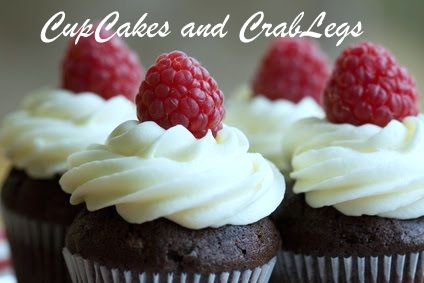I can credit my ex-husband for an
introduction to Cajun, Creole and Louisiana French cooking. Once again, it all
came down to a great cookbook.
I got the cookbook, The New Orleans
Cookbook by Rima and Richard Collin, in the early 80’s as a birthday gift from
him. I never quite understood the passion for Cajun food until I started making
it.
Having mastered all 278 recipes in this
book with the exception of Squirrel Sauce Piquante, I can attest to the fact
that every recipe is FANTASTIC – not just good but fantastic. How often
does it happen that every recipe in the cookbook is great? This was a first for
me and it has not happened since.
Cajun cook and humorist Justin Wilson
first appeared on local TV in 1971 and would soon become the face of Cajun
cuisine with his cooking shows, late-night TV appearances, and cookbooks.
By 1982, I was watching Justin Wilson’s Louisiana Cooking show.
Did any of you watch him? I think it was one-of-a-kind on television at the
time. I can remember watching him add a "cup" of wine to his recipe
and almost emptying half of the bottle. The series was taped at Wilson's camp
in southern Louisiana on the banks of the Tickfaw River. The emphasis was on
Cajun cuisine with such specialties as gizzard gumbo, deep fried turkey, and
crawfish jambalaya demonstrated together with Wilson's hilarious tales in his
Cajun lingo. He was part of the huge influence that made me an excellent Cajun
cook. I still laugh whenever I think about him.
In Louisiana cooking, locally available
ingredients predominate and preparation is easy. Creole food blends French,
Spanish, Caribbean, Mediterranean, Deep Southern American, Indian, and African
influences. Generally speaking, the French influence in Cajun cuisine is
descended from French provincial cuisines of the peasantry, while Creole
cuisine evolved in the homes of well-to-do aristocrats.
In Cajun and Creole cuisine, the roux has
been raised to a new status never before qualified in other forms of cooking.
Allowing for the variations in cooking time and fats or oils, the number of
different roux possibilities are endless. The ratio is roughly 1:1, but I tend
to use slightly more flour, more like 1-1/4 cups of flour to 1 cup of oil.
There are three basic types of roux: light
("blond"), medium ("peanut butter" colored), and dark. If
you want to master great Louisiana cooking, you have to know how to make a
roux. It’s what gives Louisiana food it’s really great flavor. I thought that I
could take a shortcut but soon learned that there is no way of getting out of
being strapped to the stove for an hour. Preparation of a roux is dependent on
cooking time. A blond roux will take five minutes; a dark roux up to 20 or 25
minutes at high heat, or an hour at low heat.
Roux must be stirred constantly to avoid burning. Continuously
means not stopping to answer your cell phone. If you see black specks in your
roux, you've burned it; throw it out and start over. Peanut oil works best for
cooking roux at high-heat.
Shrimp Creole and other fond memories…
I have a great affection for one recipe in
my cookbook and that is Shrimp Creole. I cooked it for 75 people when I worked
for William’s Companies in Tulsa. It was a retirement party for a co-worker. He
was the barge traffic manager and one of the barge companies, who happened to
be headquartered in New Orleans, offered to provide all of the shrimp. Having
lived in Tulsa for a number of years, it had been awhile since I had seen
really big shrimp. Little did I know that Louisiana Gulf shrimp, fresh from the
waters of the Gulf of Mexico, was absolutely the very best shrimp that you can
buy.
The Shrimp Creole was a hit and also
taught me that there was no difference between cooking for 6 people or cooking
for 75…you just have to chop up more to throw into the pot... simple as that!
Once it is in the pot, your work is done. Just put it on simmer and enjoy the
time with your company.
Hurricane Katrina altered New Orleans
forever but it did not change the soul or the culinary elements that makes New
Orleans what it is – a leading city for culinary excellence. I have been to New
Orleans both pre and post Katrina and it continues to remain a food mecca and
it’s restaurants help catalyze New Orleans return.
Great New Orleans restaurants…
One of my favorite restaurants in New
Orleans is Galatoire’s at 209 Bourbon Street. On its website, it says that it
is a “fourth generation of family ownership and serves authentic French Creole
cuisine at a level that raises consistency to an art form.
Even after 100 years, this ageless New Orleans favorite graces her
menu just as they did back in 1905. I can confirm that it has simply some of
the best cooking New Orleans has to offer. I find myself eating there many
times when I am in the city.
Take a class at the New Orleans Cooking
School, 524 St. Louis Street. Kevin Belton, after a long and checkered football
career with the NFL, is the star chef.
This larger than life chef, with no formal training, taught us the
finer points of Jambalaya, Shrimp Creole, Gumbo, Bread Pudding (it is to die
for) and pralines. It runs a half a day and includes lunch.
I thought I knew it all but soon learned that I was making my roux
for gumbo way too light – peanut butter instead of dark.
Again, this is the benefit of a cooking class. It teaches you all
the tricks and shortcuts.
New Orleans – Chicago Style…
One of my favorite Cajun restaurants in
Chicago is Heaven on Seven.
Jimmy Bannos, a third-generation restaurateur, worked with famous
New Orleans chefs, such as Paul Prudhomme at K-Paul’s, Frank Brigtsen and
Emeril Lagasse…
other chefs who have inspired me to cook Cajun.
Heaven on Seven restaurants have been one of the most popular
destinations in Chicago for 29 years. Jimmy marries Latin, South American,
Asian and Western European methods with New Orleans techniques and ingredients.
Although I never enjoyed living in the South, I have always craved
Jalapeno Corn Bread Muffins and Heaven on Seven makes some of the best along
with their gumbo. For under $10.00 you can get a good fix of both. They also
have a location at 600 N. Michigan Ave. I prefer the ambiance of the original
kitchen.
Another great Cajun place is the Dixie
Kitchen Evanston at 825 Church Street. From a cup of Jambalaya, Eggs Sardou, or
a Shrimp Po' Boy, the food remains some of the best Cajun food in Chicago.
I am sure there are more Cajun restaurants
in Chicago but I am stuck on these two and when I don’t cook at home, they are
the two I go to on a regular basis.
Cajun cooking at home:
My favorite dishes to cook at home are
torn out of my cookbook and placed in the front flap. Not sure why I did that
because I never have before. I think I saw someone do it in New Orleans and
decided it must be the Cajun way.
The recipes that are at the front of my
cookbook are Shrimp Sauce Piquante (Shrimp Creole), Navy (White) Bean Soup and
Chicken and Sausage File Gumbo.
In addition, my recipes from the New Orleans Cooking School for
Jambalaya and Bread Pudding also hold a place of honor at the front of my book.
In my Gumbo, I use Creole smoked sausage,
ham and chicken. I cut the calories by not eating the skin on the chicken and
often using turkey sausage. When I get sick of eating healthy all the time, I
am all for the Andouille.
The vegetables in my gumbo include green pepper, scallions,
parsley, garlic and onion. I put a lot of fresh spices in including pepper,
cayenne, thyme, bay leave and file powder. I almost never vary from these
ingredients because the gumbo always turns out incredible.
For great Shrimp Creole, I use the largest
and freshest shrimp I can find. If you are going to go to the trouble of making
this recipe, don’t skimp on the shrimp. The Italian tomatoes and a long list of
fresh spices makes this recipe an all time favorite…not to mention the red wine
and peanut butter color roux that flavors this dish. This remains my all time
favorite recipe in this cookbook.
Onion, celery and green pepper are the
holy trinity of Jambalaya. Someone at work made Jambalaya once and it tasted
nothing like this recipe. The New Orleans Cooking School’s recipe is the best recipe I’ve run across.
To me, there is nothing better than bread
pudding to close out a great Cajun meal. With day old bread, milk, sugar, butter
and eggs, you can put in a variation of extras and top a whiskey or Carmel
sauce and have a magnificent dessert. I love it because it is easy. It is
definitely my comfort food on a cold, winter night in Chicago.
Stay Warm and Bon Appetite!

PMBU.jpg)




